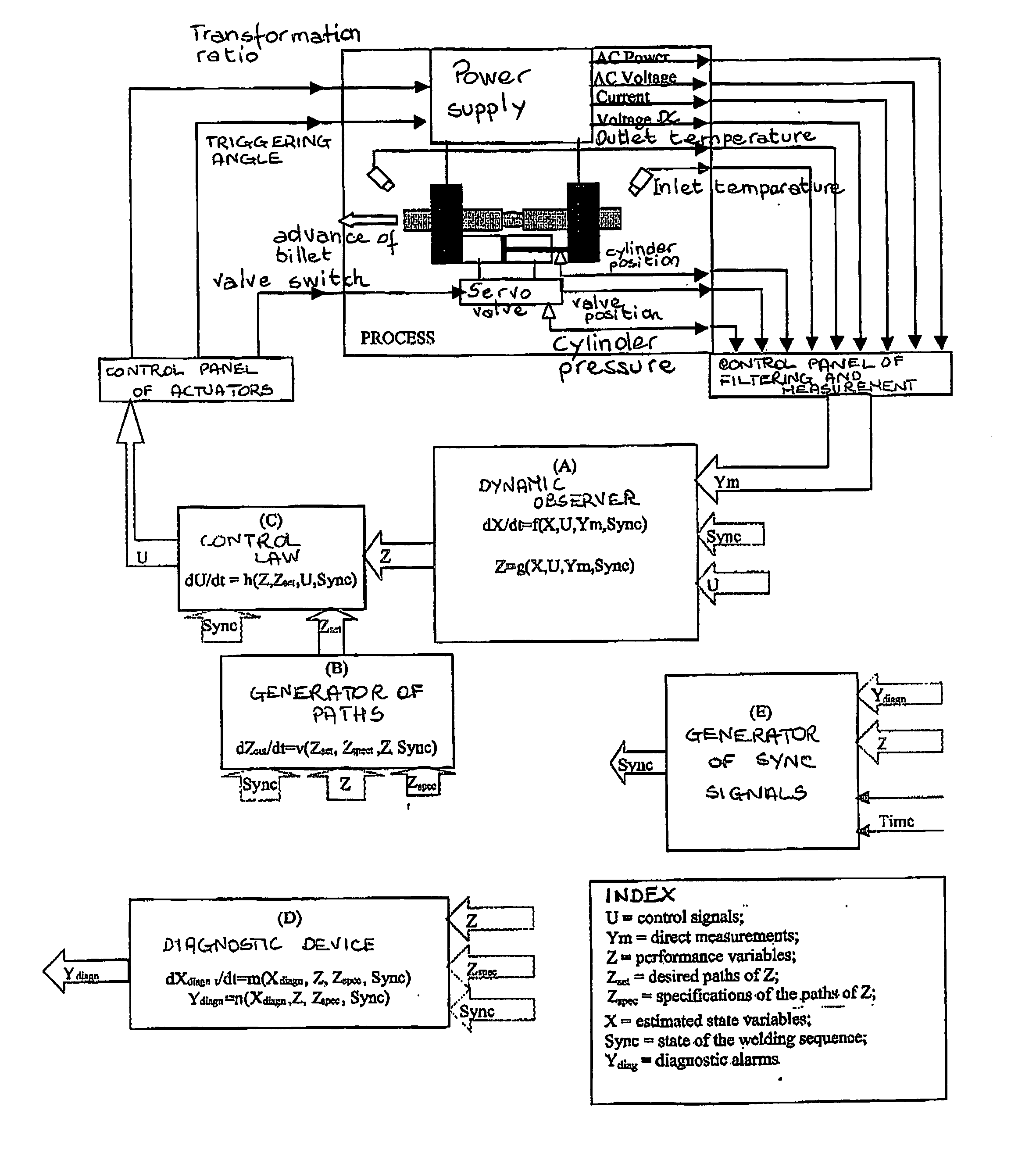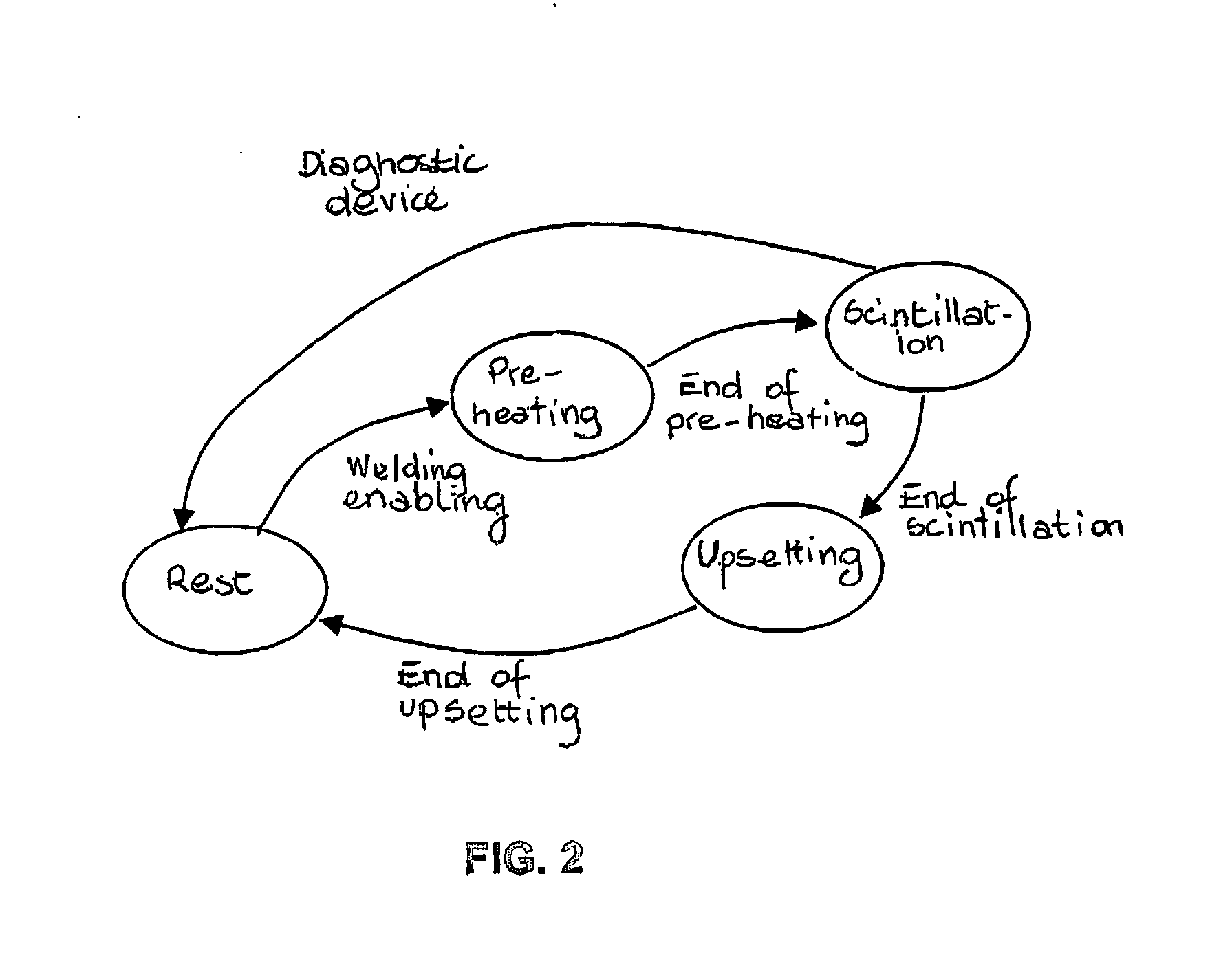If the pre-heating
voltage is too high it may occur that arcs are started.
In fact, in view of the
low resistance of the billets, with a current of 30 000 A, it is not possible to supply a thermal power greater than some thousands of watts (3-5 kW), which produces just a modest heating lower than one degree centigrade per second.
However, if the speed of the clamps increases excessively, the increase in power is no longer able to compensate for the speed of approach of the billets, and a short-circuit is produced so that the undesirable phenomenon of unstable welding is brought about.
In this case a further
disadvantage is that, with the
electric arc extinguished, the cooling of the surface of the joints is so rapid as to cause problems of re-solidification.
Also brief intervals of
extinction of the arc, in the region of 100 ms, if they occur shortly before the subsequent upsetting step, can jeopardize the weld.
This case can occur if there are employed angles of triggering of the partializer that are too large, so that current drops that are generated can render the
electric arc unstable and cause frequent extinctions thereof that jeopardize the weld quality.
With high-power welding, there is another
disadvantage; namely, it happens that the steel burns fast, thus
thinning out the “plastic” zone, i.e., the one that is found at a temperature of between 1400° C. and 1500° C. and which is used for upsetting.
Instead, at powers that are too low, the welding time is lengthened and there may be an insufficient evacuation of the oxides that are formed during
scintillation.
In the case of incorrect calibration, the production of short-circuits in the final step of
scintillation can jeopardize the goodness of the weld.
Even though short-circuits produced at the start of the
scintillation step do not jeopardize the weld seriously if they are interrupted within about a hundred milliseconds, they do, however, cause a reduction in the energy supplied to the joints, and this leads to a dispersion of the results.
From an analysis of the product obtained with some known flash-welding machines, there has been detected a high percentage of joints presenting welding defects that managed to reach the rolling stands without being detected by the
quality control.
These badly welded joints caused problems of quality in the end product and in extreme cases even jamming of the
rolling mill.
It has been found that the control systems according to the state of the art used in the regulation of the welding processes in the machines are unable to deal with major parametric variations of the process when these occur, which leads to the dispersion of the results of the
welding process.
Furthermore, amongst the systems for controlling welding for a.c. welding machines, no controller is known that is able to meet the requirements of ruggedness called for to enable operation in certain unfavourable conditions.
In this way, the
system of movement is unable to stabilize the geometry of the arc in so far as it does not take said geometry into consideration.
In this way, this
control system does not, however, take into account in any way the fact that the characteristic of the arc in the initial moments of the
welding process varies enormously and hence does not remain constant in the course of a welding cycle.
In order to maintain the arc impedance constant in this step in the presence of an arc that changes characteristic, the said control
system is unable to prevent short-circuits from being formed during ignition.
Since at each short-circuit there is an
extinction of the arc and hence a reduction in the
thermal energy supplied to the joints, this type of controller produces irregularities in the energy supplied to the weld, and hence there is a dispersion of the results.
 Login to View More
Login to View More 


